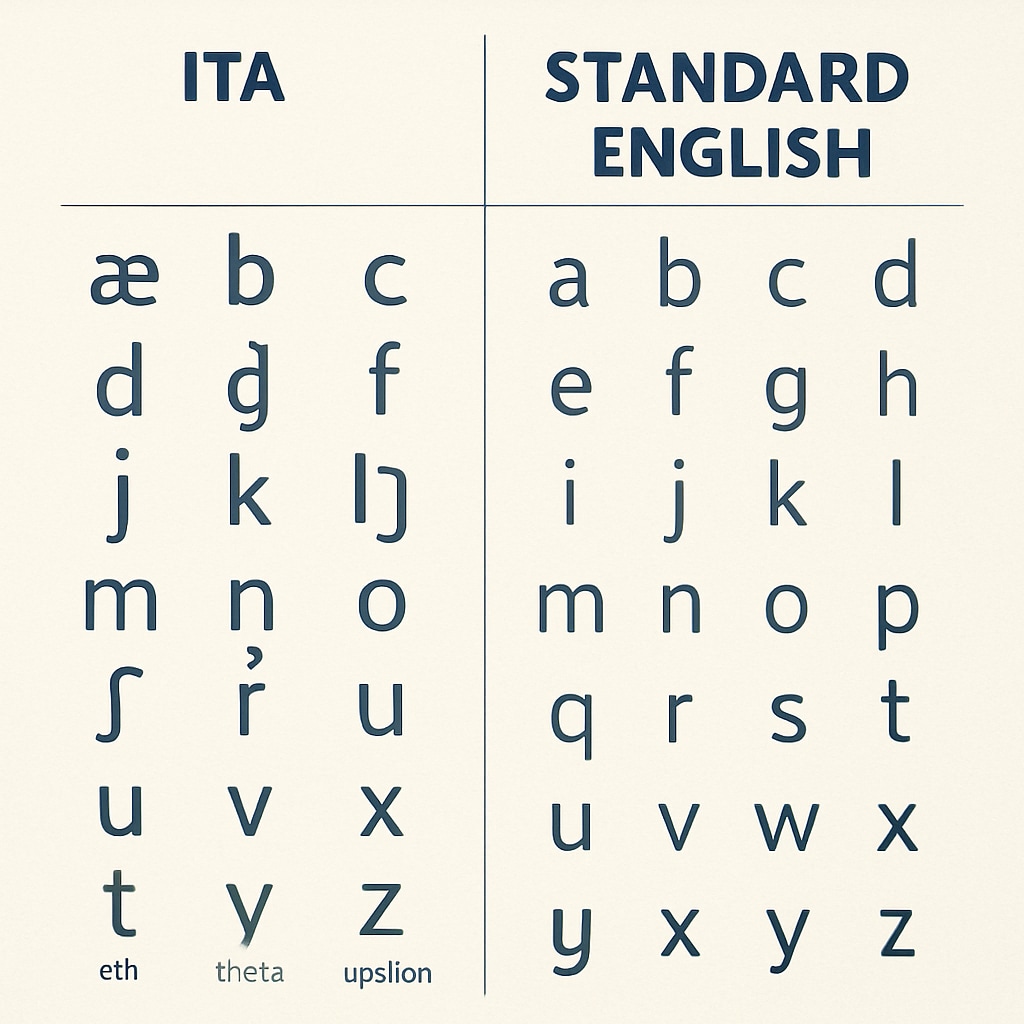The Initial Teaching Alphabet (ITA), introduced in the 1970s, aimed to revolutionize early literacy education. However, this ambitious method left a complex legacy, particularly its hidden influence on students’ spelling abilities. While it was designed to simplify reading instruction, its unintended consequences have raised concerns among educators and researchers alike. This article delves into the origins of ITA, its impact on spelling proficiency, and the lessons it offers for future educational experiments.
What Was the Initial Teaching Alphabet (ITA)?
The ITA was developed by Sir James Pitman in the mid-20th century as a phonetic alphabet containing 44 characters. Unlike standard English, ITA featured unique symbols to represent sounds directly, aiming to eliminate the inconsistencies of traditional English spelling. Advocates believed it would accelerate reading and writing development for young learners by reducing confusion caused by irregular spelling patterns.
During the 1970s, ITA gained popularity as an experimental teaching method across schools in the United States and the United Kingdom. While initial results suggested improvements in reading fluency, concerns quickly emerged regarding its long-term effects on spelling and language development. For further understanding of phonetic systems, visit Phonetics on Wikipedia.

Lingering Impact on Spelling Skills
Although ITA initially appeared to simplify literacy acquisition, its effects on spelling were less favorable. Students who learned through ITA often struggled to transition back to standard English orthography, finding it difficult to reconcile the phonetic symbols with conventional spellings. This challenge persisted, leading to a phenomenon described as “spelling confusion.” As a result, many students exhibited weaker spelling abilities compared to peers taught through traditional methods.
Key issues included:
- The reliance on phonetic symbols hindered the development of memory-based spelling skills.
- Students struggled with irregular spelling rules in standard English after transitioning from ITA.
- Long-term studies revealed slower spelling skill progression among ITA-taught individuals.
For an in-depth exploration of spelling development, check out the Spelling article on Britannica.

Lessons for Future Educational Innovations
The ITA experiment serves as a cautionary tale for educational innovation. While bold methods can offer promising results, their unintended ramifications must be carefully considered. ITA’s failure to account for the complexities of language transition reminds us of the importance of holistic planning in curriculum development. Moreover, its legacy underscores the need for extensive pilot testing before widespread implementation.
Educators and policymakers can learn the following lessons:
- Prioritize long-term outcomes over short-term gains in educational experiments.
- Ensure compatibility between experimental methodologies and real-world applications.
- Provide robust support systems for students during transitional phases.
As a result, educational innovators must balance ambition with caution, designing methods that enhance learning without sacrificing foundational skills like spelling.
In conclusion, the ITA method, while groundbreaking in its era, left a lasting imprint on literacy education. Its complex legacy of spelling difficulties serves as a reminder to approach educational innovation with care, ensuring that promising ideas do not inadvertently compromise essential skills.


